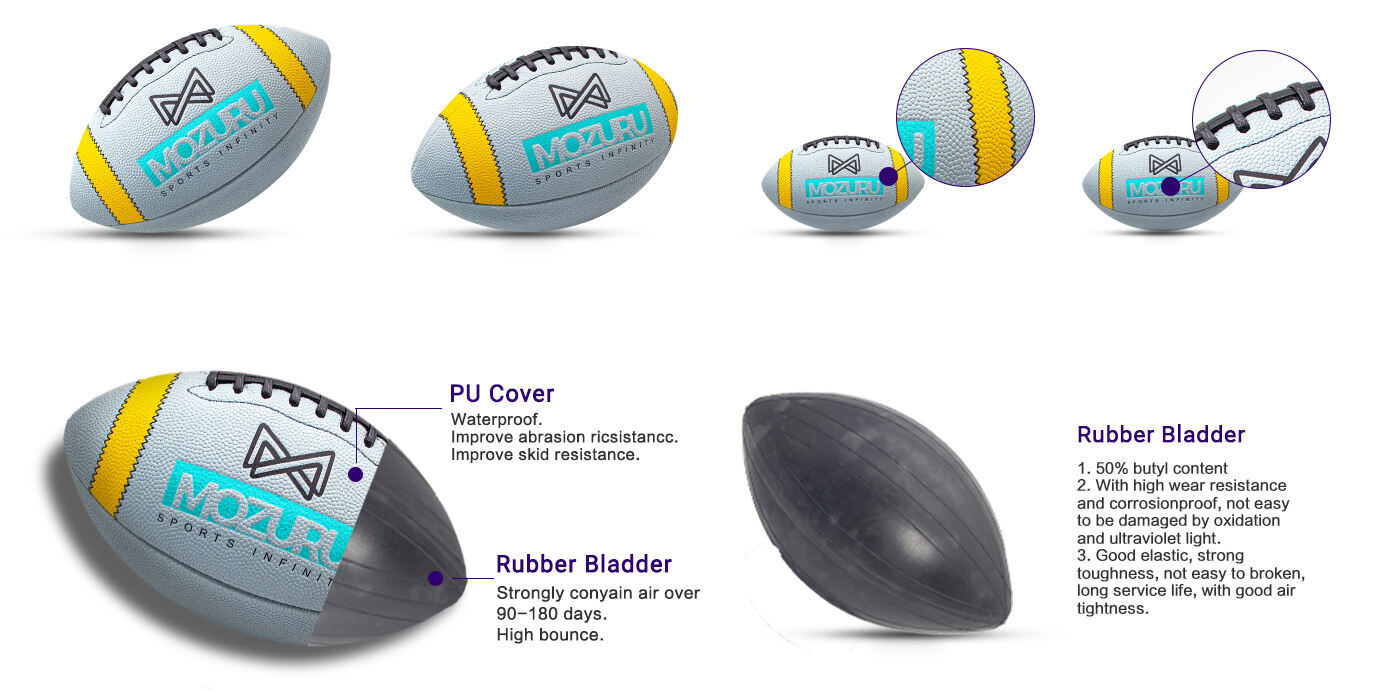Understanding Wholesale Football Selection for Retail Businesses
The process of selecting American footballs for retail chain supply requires careful consideration of multiple factors to ensure both quality and profitability. Retail businesses must navigate through various manufacturers, quality standards, and price points to build an inventory that meets customer demands while maintaining healthy profit margins. This comprehensive guide explores the essential aspects of wholesale football procurement and distribution strategies for retail chains.
Key Considerations for Retail Football Procurement
Quality Standards and Materials
When sourcing American footballs for retail supply, the material quality stands paramount. Premium leather footballs typically offer better grip, durability, and performance characteristics desired by serious players and teams. Synthetic materials, while more affordable, can provide adequate quality for recreational use and practice sessions. Retail chains must carefully balance their inventory between these options to serve different market segments effectively.
The construction quality, including stitching, internal bladder material, and lacing systems, directly impacts the ball's performance and longevity. Establishing relationships with manufacturers who maintain consistent quality standards ensures reliable retail american football supply and builds customer trust.
Price Point Strategy
Developing an effective pricing strategy requires understanding the target market's purchasing power and expectations. Entry-level footballs might retail between $15-30, while professional-grade balls can command prices exceeding $100. Retail chains must factor in wholesale costs, markup requirements, and competitive positioning when determining their price ranges.
Volume purchasing can significantly impact unit costs, enabling retailers to offer more competitive prices while maintaining profitable margins. Strategic negotiation with suppliers and careful inventory management help optimize the retail american football supply chain's financial performance.
Market Segmentation and Product Mix
Consumer Categories
Different customer segments have varying needs and preferences when it comes to football equipment. Youth leagues may prioritize durability and affordability, while high school and college teams often seek regulation-compliant, performance-focused products. Professional teams and serious athletes typically demand the highest quality specifications.
Understanding these distinct market segments helps retail chains develop appropriate product assortments and marketing strategies. This knowledge enables better inventory planning and more effective retail american football supply management.
Seasonal Considerations
Football equipment sales typically follow seasonal patterns, with peak demand during pre-season and early season periods. Retail chains must plan their inventory levels accordingly, ensuring sufficient stock during high-demand periods while minimizing excess inventory during off-seasons.
Special promotions and marketing initiatives can help maintain steady sales throughout the year, particularly during traditionally slower periods. This approach helps optimize the retail american football supply chain and maintain consistent revenue streams.
Supply Chain Management Best Practices
Inventory Control Systems
Implementing robust inventory management systems helps retail chains track stock levels, monitor sales patterns, and automate reordering processes. Modern software solutions can provide real-time visibility across multiple store locations, enabling more efficient retail american football supply coordination.
Advanced analytics tools help predict demand patterns, optimize stock levels, and reduce carrying costs while ensuring product availability. These systems are crucial for maintaining efficient operations and meeting customer expectations.
Supplier Relationships
Building strong relationships with reliable manufacturers and distributors is essential for maintaining consistent product quality and supply. Regular communication, performance monitoring, and collaborative planning help ensure smooth operations and mutual success.
Diversifying supplier relationships while maintaining primary partnerships helps mitigate supply chain risks and ensures stable retail american football supply even during market disruptions or peak demand periods.
Quality Control and Customer Satisfaction
Product Testing and Validation
Implementing comprehensive quality control processes helps maintain product standards and customer satisfaction. Regular product testing, inspection procedures, and performance validation ensure that every football meets specified requirements before reaching store shelves.
Documentation and tracking systems help identify and address any quality issues quickly, maintaining the integrity of the retail american football supply chain and protecting the retailer's reputation.
Customer Feedback Integration
Establishing systems to collect and analyze customer feedback helps retail chains refine their product selection and service delivery. Regular surveys, review monitoring, and direct customer interaction provide valuable insights for improving the retail american football supply program.
Using this feedback to adjust product mix, pricing strategies, and service offerings helps maintain customer satisfaction and loyalty while driving continuous improvement in the supply chain.
Frequently Asked Questions
What quality certifications should retailers look for when selecting football suppliers?
Retailers should seek suppliers with relevant industry certifications, including official licensing from major sports organizations, ISO quality management certifications, and compliance with applicable safety standards. These certifications help ensure product quality and regulatory compliance.
How can retail chains optimize their football inventory for different seasons?
Successful inventory optimization involves analyzing historical sales data, monitoring market trends, and maintaining flexible supplier arrangements. Implementing dynamic pricing strategies and promotional planning helps manage seasonal fluctuations effectively.
What are the key factors in negotiating wholesale football prices?
Important factors include order volume commitments, payment terms, delivery schedules, and quality guarantees. Building long-term supplier relationships and demonstrating reliable payment history can help secure better pricing and terms.


